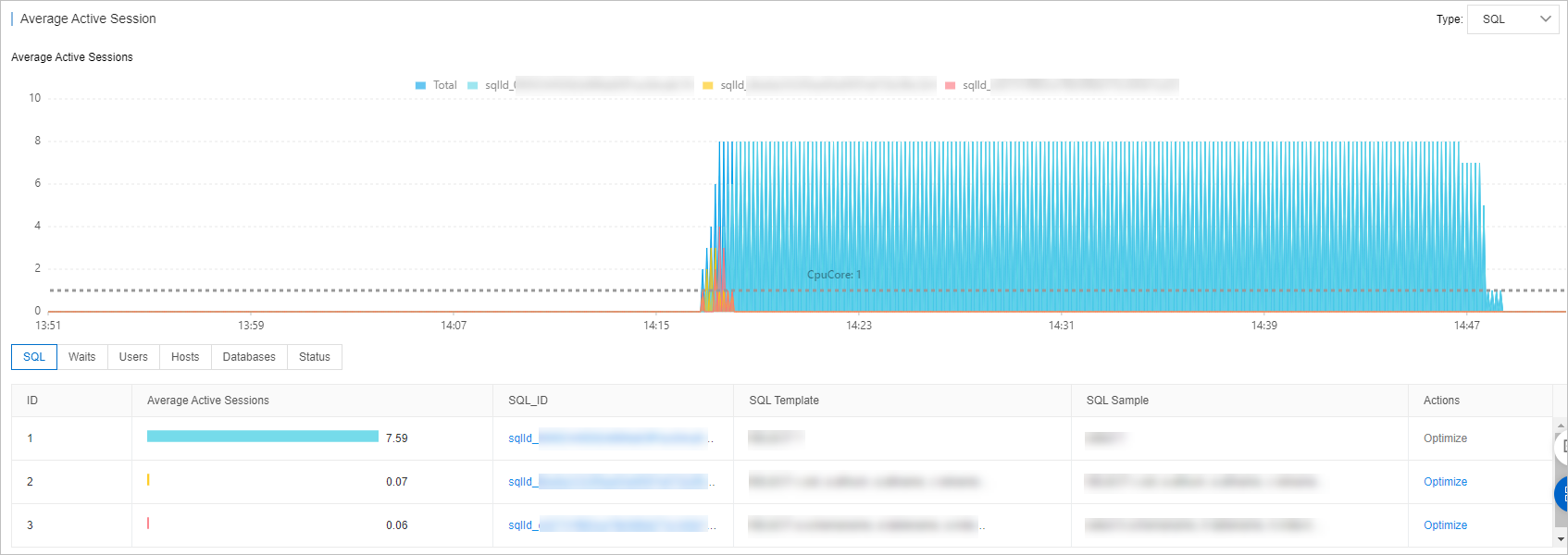Database Autonomy Service (DAS) provides the performance insight feature for ApsaraDB RDS for PostgreSQL. You can use this feature to monitor the loads, analyze the associated data, and optimize the performance of your ApsaraDB RDS for PostgreSQL instance. This feature helps you identify and troubleshoot performance issues to increase the stability of your RDS instance.
Prerequisites
Your RDS instance runs RDS High-availability Edition.
Data sources
If the Performance Schema feature is enabled for a database instance, the original version of the performance insight feature collects and analyzes data stored in the Performance Schema feature.
If the Performance Schema feature is disabled for a database instance, the original version of the performance insight feature collects and analyzes the data of active sessions.
Procedure
- Go to the Instances page. In the top navigation bar, select the region in which the RDS instance resides. Then, find the RDS instance and click the ID of the instance.
In the left-side navigation pane, choose Autonomy Services > Diagnostics.
On the Performance Insight tab, click Enable Performance Insight. In the message that appears, click OK to enable the performance insight feature.
NoteIf you no longer require the performance insight feature, you can click Disable Performance Insight on the Performance Insight tab.
In the Performance Insight section, specify a time range, and then click Search to view the database performance metrics within the specified period.
NoteWhen you select a time range, the end time must be later than the start time.
Data generated in up to seven days within the last month are displayed in the Performance Insight section.
The information about sessions in the last three days is displayed in the Average Active Session section.
In the Performance Insight section, you can specify a time range to view the database performance metrics within the specified period.
You can view details of a specific performance metric. For example, if you want to view the memory usage or CPU utilization of the database instance, click Details on the right side of Memory Usage/CPU Utilization.

In the Average Active Session section, you can view the trends of different types of sessions and the database workloads from multiple dimensions. This can help you identify the root causes of performance issues.
On the SQL tab, click Optimize in the Actions column of an SQL query to enter the SQL Diagnosis Optimization page. On the SQL Diagnosis Optimization page, view the corresponding SQL statement, execution plan, and diagnosis result.
